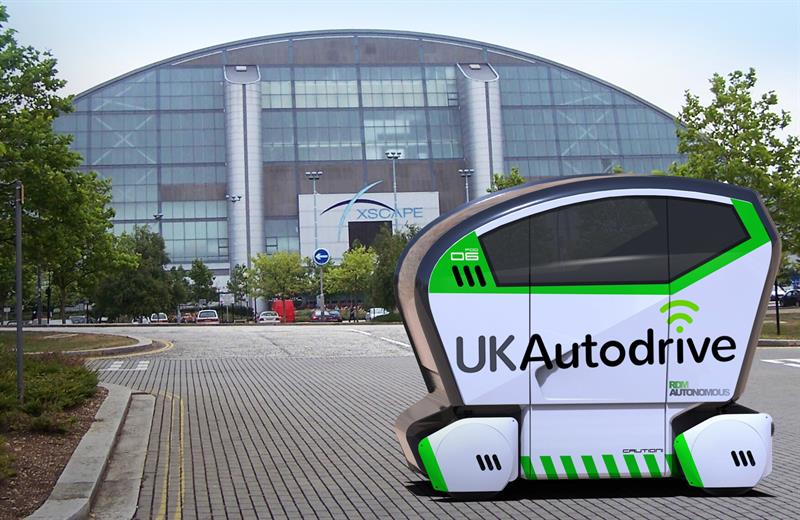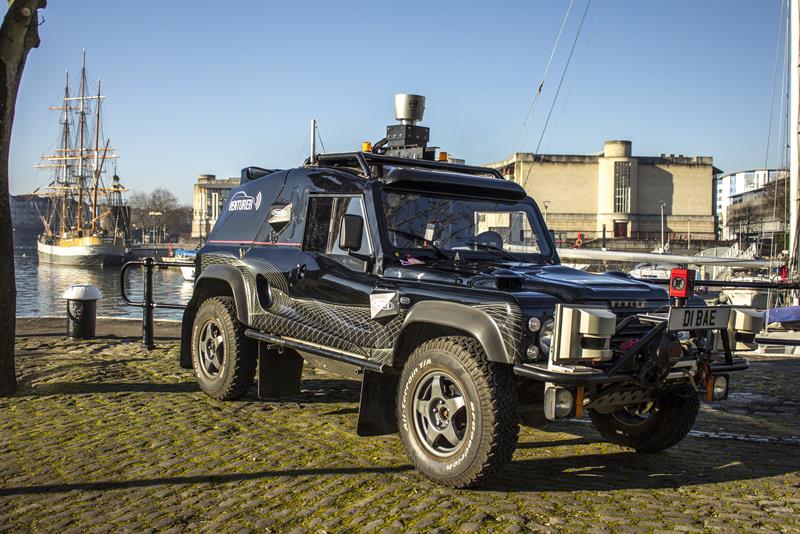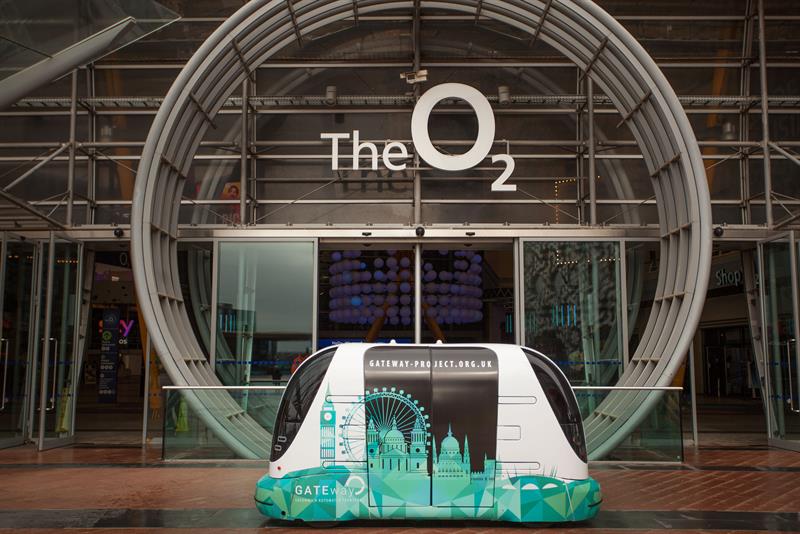Driverless cars are coming. Google has been testing its autonomous vehicles in California, Texas, Washington and Arizona for the last few years and has clocked up 1.5million miles in total. Tesla was the first company to upgrade its current fleet of Model S cars with an AutoPilot feature with version 7.1 of its software updates in January 2016. But where are the high profile schemes being trialled in the UK?
In the fallout from the vote to leave the EU, the UK may now be in a better position post Brexit, as it never ratified the Vienna Convention, which requires “every driver shall at all times be able to control his vehicle”. This means that connected and autonomous vehicles (CAVs) in the UK are not just confined to test tracks or certain geographical areas, do not need to obtain certificates or permits, and are not required to provide a surety bond - provided insurance has been arranged.
Already seen as an attractive test-bed for automotive technologies, Britain may now become even more attractive than other European countries now it is freed from EU red tape, making it likely to be less complicated to test CAVs in this country.
In a report entitled ‘The Pathway to Driverless Cars’, published in February 2015, Claire Perry, then Parliamentary Under Secretary of State for Transport, said: “This creates a tremendous opportunity for the whole country to share in shaping the future of these exciting developments and the Government wants to play its part in making that happen. I believe we have one of the most welcoming regulatory environments for development of this technology anywhere in the world.”
The government has put plans in place, included in the Queen’s Speech earlier this year, to make Britain a world leader in self-driving vehicle technology. These included setting up the Centre for Connected and Autonomous Vehicles as well as a £20million investment from the Department of Business, Innovation and Skills into collaborative research and development projects and feasibility studies into CAV and transport systems.
Automotive manufacturers Ford, Nissan, Volvo and Jaguar Land Rover are all planning to test autonomous versions of their vehicles on the UK’s motorways and on London’s roads. Pods are already in use at Heathrow, although these currently run on designated tracks rather than completely autonomously. However, there are already three projects in development in Bristol, Coventry, Greenwich and Milton Keynes that are at the stage of testing the vehicles on the roads and pavements of those cities.
 Coventry and Milton Keynes
Coventry and Milton Keynes
UKAutodrive is a three-year project that started in November 2015, overseeing projects in Milton Keynes and Coventry where the consortium is working on CAV technologies around both cities. In Milton Keynes, it is also working on delivering a fleet of 40 fully-autonomous pods, able to travel at up to 15mph, that will act as a public transport system.
Danielle McGrellis, UKAutodrive project manager, said: “We are in the planning stages; designing the vehicles and their safety aspects, what parts of the cities we will use for the trials and where the routes for the autonomous pods will run.
“Our first demonstrations with the connected cars will be taking place in the Autumn of 2016 on Horiba-Mira’s test track, moving to closed city roads and then onto open roads by the end of the project. The autonomous pods are due to arrive in the Autumn of 2017, starting off with three or four of them being demonstrated at first increasing to the full 40 in Spring or Summer of 2018,” McGrellis added.
UKAutodrive is working with Ford, Jaguar Land Rover and Tata Motors on the connected vehicles with each working on sensor systems for their individual cars and will use a combination of cameras, radar and lidar as well as the software platforms and algorithms to complete a full system to harvest information.
RDM is developing the sensor systems on the pods, which will use its sensor systems to map its immediate surroundings and will combine this with information about the city’s layout by communicating with a central database.
McGrellis said: “Security is a challenge in the same way as it is in all industries to protect against threats. Gowling WLG has produced a white paper on data protection and are planning to produce other legal papers. However, the actual advice on security is being provided by Thales, and Horiba-Mira for safety.”
The insurance company, AXA is consulting on insurance as well as advising on the public demonstrations. “There is, undoubtedly going to be a shift in the way vehicles are insured because of the possible shift away from ownership and because no one will want to be liable in an incident involving a vehicle that they are not in control of,” explained McGrellis.
In September 2016 UKAutodrive will launch a public survey to understand public attitudes towards self-driving technology as well as examining the business case for self-driving pod vehicles, how the technology can be scaled up and how the eventual roll out of these vehicles could affect congestion levels. A further survey will be undertaken at the end of the project in 2018 to judge how perceptions have changed over that period.
Public perception in Bristol
Venturer is a three-year project, co-funded by Innovate UK, being held in and around Bristol and South Gloucestershire. This project is focussing on public perception as well as the technology side of the trials and aims to understand the barriers and drivers to the wide scale adoption of CAVs.
Initial tests have taken place in August at the University of West England’s campus with further testing of autonomous vehicles scheduled to take place on roads in South Gloucestershire and Bristol city centre in 2017 and 2018. During these tests the project aims to engage and share information with the public and industry.
Over the last year, the academics and business leaders working on the Venturer project have been working on the logistics, technology, legal and insurance issues. The autonomous pods themselves are due to be trialled on the streets of Bristol in the Summer of 2017.
Gateway to Greenwich
In Greenwich, the GATEway project is due to start trials of highly and fully automated pods around the Greenwich Peninsula. The pods have been developed by a consortium including Westfield Sportscars, Oxbotica and Heathrow Enterprises and are currently in the final stages of development and will be put through a series of safety tests. The pods will begin real-world trials in late Autumn 2016 and continuing into Spring of 2017.
Professor Nick Reed, academy director at TRL and GATEway technical lead, said: “The project is progressing nicely and over the past nine months we have been working hard to lay the necessary foundations to ensure trials are optimally developed and delivered and all risks understood and mitigated.”
The project has also started its pre-trial engagement activities, working with members of the public to ascertain people’s thoughts and feelings towards automated vehicles. The Royal College of Art is hosting in-depth research workshops and an online sentiment mapping tool has been developed by Commonplace. According to prof Reed, over 400 people have participated so far and the overall response has been positive.
“There are many challenges to using low speed automated vehicles in a pedestrianised area like the one we are using in Greenwich,” explained prof Reed. “We have had to create new digital maps of the area; GPS accuracy is inconsistent; vehicles are operating on a mixture of roads and pavements and must respond appropriately to pedestrians, cyclists and animals; and the vehicle fleet must be co-ordinated to meet consumer demands.”
To overcome these challenges, the GATEway vehicles will use the Selenium autonomy control system from Oxbotica. This guides the vehicle safely, creating and following its own digital maps in these types of challenging environment and without reliance on GPS or infrastructure beacons.
The CAV projects are also encouraging UK innovation: “We have utilised a 100% British supply chain for the development and supply of the vehicles,” said Prof Reed. “We feel that this is a very positive outcome for the UK’s position in the development of vehicle automation in a highly competitive environment.”
These four projects are about to shift into a higher gear. Over the next few months CAVs and driverless autonomous pods will take to the streets en masse across the country with the consortia behind them attempting to win the hearts and minds of the public.
However, their job may have become easier than it was than even the conception of these projects as public opinion seems to have evolved over the last two years. A survey by Churchill Car Insurance taken in 2014 found that 56% of those that took the survey would never buy a driverless car, with only 8% saying they have no safety concerns about self-driving technology. In June 2016, Opinion Matters ran a survey that found that 78.1% said that autonomous driving would have a positive impact on commuting.
The UK projects are all reporting positive advances which seem to mirror the recent apparent change in public opinion. Much more will be made in the press in the next two years around the progression of the UKs CAV projects and their impact on the UKs automotive sector. Driverless cars are coming.

Government timeline for the development of CAVs As part of the 2013 National Infrastructure Plan, the Government pledged a review of the legislative and regulatory framework to enable the trialling of driverless cars on UK roads. These plans were also announced in the 2013 Autumn Statement. On 30 July 2014, the Government launched a ‘driverless cars’ competition inviting UK cities to join together with businesses and research organisations to host vehicle trials locally. The results were announced in December 2014 with Greenwich, Milton Keynes, Coventry and Bristol being selected, and £19million being provided by the Government to allow testing of automated vehicle technology. Spring 2015: Publication of a Code of Practice, to promote safety and set clear guidance to be followed for responsible testing. Those conducting CAV tests were required to provide information about their testing to the public, as part of their risk management process, taking into account the views of relevant stakeholders such as local highway authorities. Summer 2017: Government to review and amend domestic regulations to accommodate driverless vehicle technology. Summer 2017: Analyse existing regulations on vehicle use to ensure that automated vehicles are used and maintained in such a way as to preserve their compliance with road traffic law. Summer 2017: Review existing vehicle use requirements in the light of evidence and experience gained from automated vehicle testing. End of 2018: Consider appropriate measures to ensure that automated vehicles are designed to respect road traffic law. End of 2018: Government to liaise at an international level with an aim to amend international regulations. |
What government is expecting from industry Ongoing research and development of highly and fully autonomous vehicle technologies to the end of the projects and beyond. February 2015 onwards: Production and testing of automated vehicle prototypes on closed roads/test tracks. Spring 2015 onwards: Testing of automated vehicle technologies on UK public roads. Summer 2017 onwards: Production of highly and fully automated road vehicles. |





